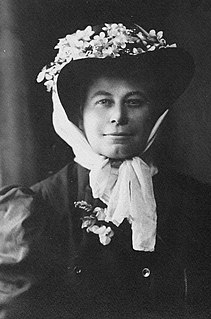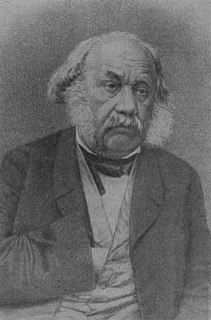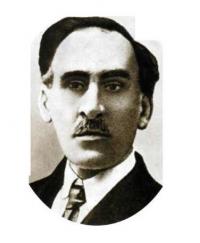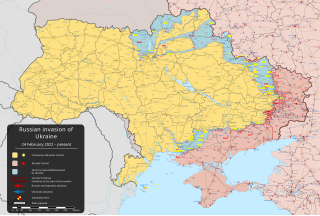Related Research Articles

A herbarium is a collection of preserved plant specimens and associated data used for scientific study.

The A.V. Fomin Botanical Garden is one of the oldest botanical gardens in Ukraine, located in Kyiv, the capital of Ukraine. In 1839 the Saint Vladimir Imperial University of Kiev opened its own botanical garden. The botanical garden is 22.5 hectares (0.225 km2), with 8,000 plant species, including 143 recorded in the Ukraine's Red Book of Rare Species. The Garden is famous for its exotic plants: it has the biggest collection of succulents among the countries of the former Soviet Union. The greenhouse, which was built for the largest and the oldest palm trees in Northern Eurasia, is among the highest in the world. In 1935 the garden was named after the academician and botanist Aleksandr Vasiljevich Fomin, who directed the garden for years. The vestibule of the Kyiv Metro station Universytet, is located on the northern edge of the garden, which was opened in 1960.(Google Maps link).

Alice Eastwood was a Canadian American botanist. She is credited with building the botanical collection at the California Academy of Sciences, in San Francisco. She published over 310 scientific articles and authored 395 land plant species names, the fourth-highest number of such names authored by any female scientist. There are seventeen currently recognized species named for her, as well as the genera Eastwoodia and Aliciella.

Elmer Drew Merrill was an American botanist and taxonomist. He spent more than twenty years in the Philippines where he became a recognized authority on the flora of the Asia-Pacific region. Through the course of his career he authored nearly 500 publications, described approximately 3,000 new plant species, and amassed over one million herbarium specimens. In addition to his scientific work he was an accomplished administrator, college dean, university professor and editor of scientific journals.

Nikolai Stepanovich Turczaninow was a Russian botanist and plant collector who first identified several genera, and many species, of plants.

The Siberian Elm cultivar Ulmus pumila 'Pendula' is from northern China, where it is known as Lung chao yü shu. It was classified by Frank Meyer in Fengtai in 1908, and introduced to the United States by him from the Peking Botanical Garden as Weeping Chinese Elm. The USDA plant inventory record (1916) noted that it was a "rare variety even in China". It was confirmed as an U. pumila cultivar by Krüssmann (1962).

Edward Lee Greene was an American botanist known for his numerous publications including the two-part Landmarks of Botanical History and the describing of over 4,400 species of plants in the American West.

Mary Katharine "Kate" Brandegee was an American botanist known for her comprehensive studies of flora in California.
Baron Friedrich August Marschall von Bieberstein was an early explorer of the flora and archeology of the southern portion of Imperial Russia, including the Caucasus and Novorossiya. He compiled the first comprehensive flora catalogue of the Crimeo-Caucasian region.

Aleksandr Vasiljevich Fomin was a Russian botanist that lived during the reign of the Soviet Union. He studied ferns and seed plants. He was also a director of the Kiev University Botanical Garden; which was renamed after him, when he died.

Mariya Yakovlevna Zerova, alternately Marija Jakovlevna Zerova, was a Ukrainian biologist and taxonomist known for her work in mycology.

Dariya Nikitichna Dobroczajeva was a Ukrainian botanist and university teacher.

On 24 February 2022, Russia invaded Ukraine in a major escalation of the Russo-Ukrainian War, which began in 2014. The invasion has likely resulted in tens of thousands of deaths on both sides and caused Europe's largest refugee crisis since World War II, with an estimated 8 million people being displaced within the country by late May as well as 7.7 million Ukrainians fleeing the country as of 18 October 2022. Within five weeks of the invasion, Russia experienced its greatest emigration since the 1917 October Revolution. The invasion has also caused global food shortages.

Tetiana Leonidivna Andriienko was a Ukrainian botanist, conservationist, and professor. She was known for her scientific research on the distribution of vegetation in Polesia, which in turn helped create protected wildlife areas. Andriienko was the head of the Interdepartmental Complex Laboratory of Scientific Fundamentals of Protected Areas of the National Academy of Sciences of Ukraine and the Ministry of Environmental Protection and Natural Resources Ukraine.
Alfred Mycolayovych Oxner was a Ukrainian botanist and lichenologist. His research covered various areas: floristics, taxonomy, phylogenetics, phytogeography, and phytosociology. Oxner founded the National Lichenological Herbarium of Ukraine.
Sergey Yakovlevich Kondratyuk is a Ukrainian botanist specialising in lichenology. His research deals with the taxonomy, floristics, ecology and geography of lichens and lichenicolous fungi. He has worked at the M.G. Kholodny Institute of Botany of National Academy of Sciences of Ukraine for more than 40 years. In 2014 Kondratyuk was awarded the State Prize of Ukraine in Science and Technology.
References
- 1 2 Shiyan, Natalia M; Korniyenko, Olga M; Mosyakin, Sergei L (2012). "National Herbarium of Ukraine (KW)". doi:10.13140/RG.2.1.2809.3843.
{{cite journal}}: Cite journal requires|journal=(help) - 1 2 "Herbarium Details - M.G. Kholodny Institute of Botany, National Academy of Sciences of Ukraine". The William & Lynda Steere Herbarium. Retrieved 12 October 2022.
- ↑ Research Group Biodiversity and Evolution of Plants, University of Oldenburg [@AlbachLab] (11 October 2022). "Senseless #missile attack on the National #Herbarium of #Ukraine (KW). Fortunately, nobody injured and no irreversible loss of specimens. But so many other senseless attacks caused loss of lives and homes. [...]" (Tweet). Retrieved 12 October 2022– via Twitter.